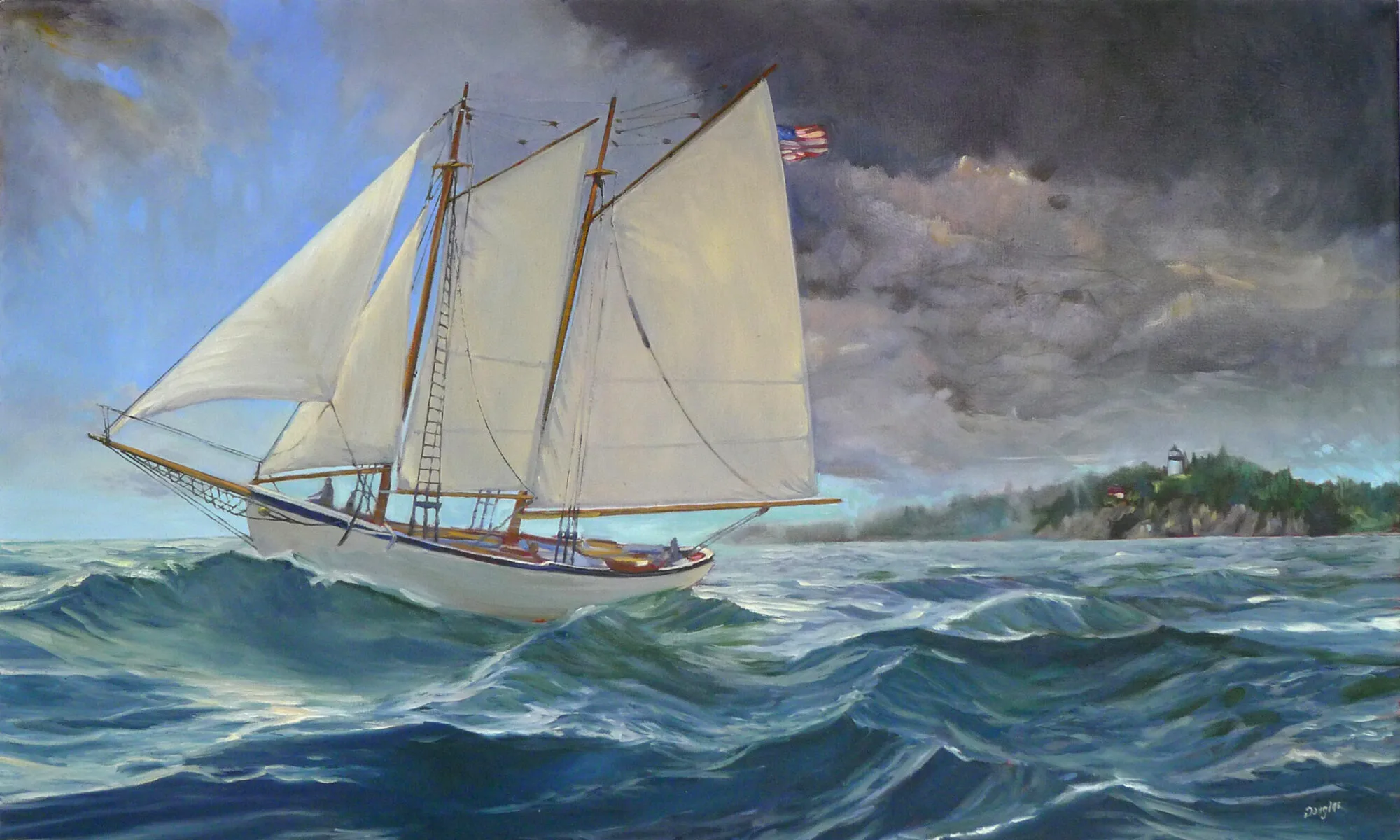The last time I was certain that I had my phone on Tuesday was when I launched Dark Sky to check the weather. A few minutes later, it was missing. I checked with the Schoodic Institute staff, other guests, and my students. I retraced my steps for the prior two hours. No phone.
I’m a pro at losing things, so my searches have become methodical. I don’t panic, since most of the time I eventually find the missing item. Nor do I tear things apart in a frenzy. I clean and straighten until I find what I was looking for. After all, one might as well get some benefit out of the experience.

Cecelia’s lovely painting of the mouth of Frazer Creek at low tide.
Although I was certain I’d had my phone at supper, I returned to my suite and carefully stripped and remade my bed. I tidied the kitchen. No phone.
Each morning I collect a giant cooler with our lunches and snacks in it. On Wednesday, I resolved to clean and reorganize my car before putting the cooler in. I was halfway through when someone asked me a question. I walked about twenty feet away to answer it.

I gave Lynne six pastels of my choosing and told her to do a painting with them. She did an awesome job.
When I returned I was stunned to see my phone sitting on my car roof. It was covered with dew. If there was anyone else in the area, they were pretty nippy on their feet.
“Manna from heaven!” exclaimed Ken Avery. “It returned with the dew!” Answered prayer can be big or small but it always leaves you chuffed.

As Lynne did her limited-palette pastel drawing, I painted alongside with a similar palette. Very unfinished.
We began our work at Frazer Point. This area was named after Thomas Frazer, an African-American who established a salt works near the mouth of Frazer Creek sometime before 1790. Our view looked across Mosquito Harbor to Norris Island and the bridge across Frazer Creek.
By 1 PM a light mist was developing and the air smelled of rain. Lynne collected a mess of still life material from the beach before we returned to the Schoodic Institute Pavilion. There we did color temperature exercises in what eventually developed into a downpour.
By 5 PM, all we wanted were hot showers and dry clothes. We met for dinner at 6, where we were joined by a late arrival to our group, Matt Avery.
I got back to my suite at 7:30, thrilled to be in early on such a cool, rainy night. I changed into my nightclothes and settled down with my laptop. There I found a message from two of my dearest friends in the world: “We are at Schoodic for the night. Have to leave by 8:30 AM.” After a brief war with my lazier self, I got dressed again and headed back out. We had a nice but all-too-brief visit.
A fog swirled through the dark woods as I walked back. Yes, there are black bears and moose in Maine. I don’t like surprising wild animals in their native habitat, so I sang the first song that popped into my mind. “A Mighty Fortress is our God” seemed oddly appropriate.
Manna from heaven, indeed.




































